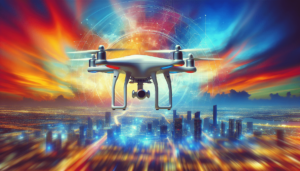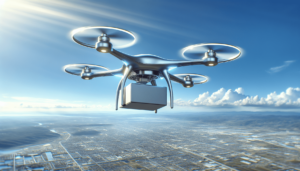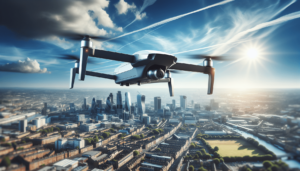Have you ever pondered how the commanding buzz of drones above fields is shaping the future of agriculture? The transformation brought about by drones in modern farming and crop monitoring is nothing short of revolutionary. As we stand on the brink of an agricultural metamorphosis, drones are proving themselves to be more than mere technological novelties. These flying devices are turning into a vital tool for farmers, offering new ways to monitor crops, optimize resource usage, and increase efficiency.
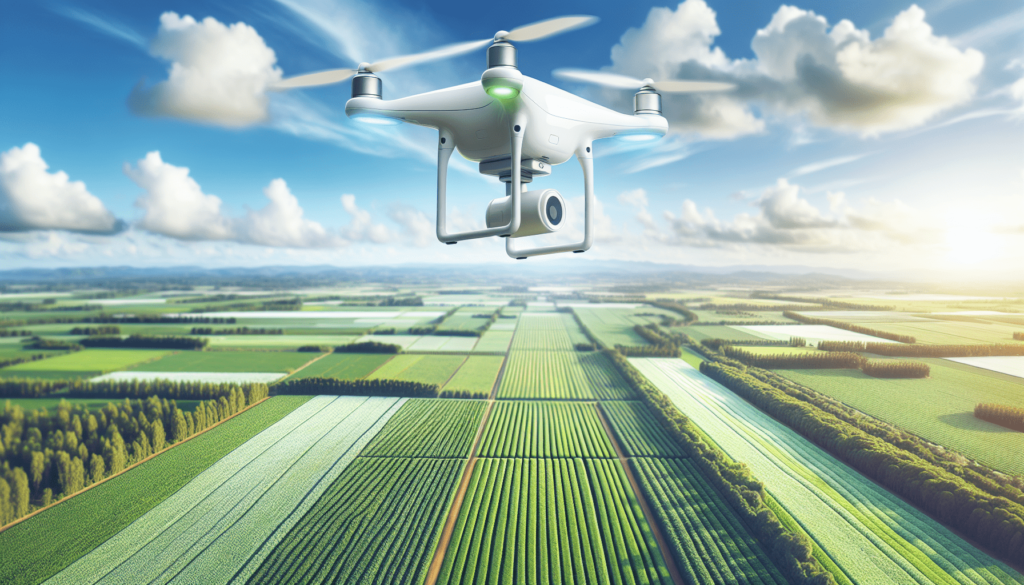
The Role of Drones in Modern Agriculture
Drones, or unmanned aerial vehicles (UAVs), have swooped into the agricultural sector with a promise of precision and efficiency. Their rise is not merely a technological trend but a reflection of an urgent need to evolve traditional agricultural practices. As farming faces challenges such as climate change, shrinking arable land, and a growing global population, drones have emerged as an answer to these pressing issues. I find myself fascinated by how drones can provide farmers with detailed data, allowing them to make informed decisions.
Why Drones?
The utilization of drones in agriculture is anchored in their ability to cover large areas in a relatively short time. Unlike traditional methods of crop monitoring, drones offer a bird’s eye view, capturing high-resolution images and videos that reveal the condition of crops from vantage points that are otherwise inaccessible. The question isn’t whether drones will transform agriculture — they already are — but rather how extensive this transformation will be.
Evolution of Drone Technology in Farming
The initial use of drones in agriculture was largely experimental. Fast forward to today, and they are equipped with advanced sensors and GPS technology, amassing data that is critical to the health of farms. Drone technology has advanced significantly over a short period, providing capabilities such as remote sensing, data analysis, and multispectral imaging. The story of drones in farming is still being written, but its chapters so far are engrossing.
Key Benefits of Drones in Agriculture
There is an array of benefits that drones bring to the table, redefining various aspects of farming in sleek and efficient ways. They aid in crop monitoring, irrigation management, and even livestock management. As someone who once thought of drones as mere toys, seeing them now as a sophisticated farm implement is quite the paradigm shift.
Enhanced Crop Monitoring
One of the primary uses of drones in agriculture is their ability to monitor crops effectively and efficiently. With cameras and sensors, drones can provide early detection of pest infestations, diseases, and other issues jeopardizing crop health. The advantage of receiving near-instant data allows farmers to react promptly, potentially averting devastating losses.
Precision Agriculture
Precision agriculture, an essential facet of modern farming, involves managing crops precisely to minimize inputs while maximizing outputs. Here, drones are indispensable. Through data gathered by drones, farmers can analyze soil types, plant health, and field conditions with unprecedented accuracy. The concept of precision agriculture resonates deeply with me as it encapsulates the idea of doing more with less — a philosophy that aligns with sustainable development goals.
Efficient Resource Use
A practical benefit of drone technology is the optimized use of resources. By pinpointing exactly where water, fertilizer, or pesticides are needed, drones help reduce waste and lower costs. This targeted approach not only conserves resources but also reduces the environmental impact of farming practices.
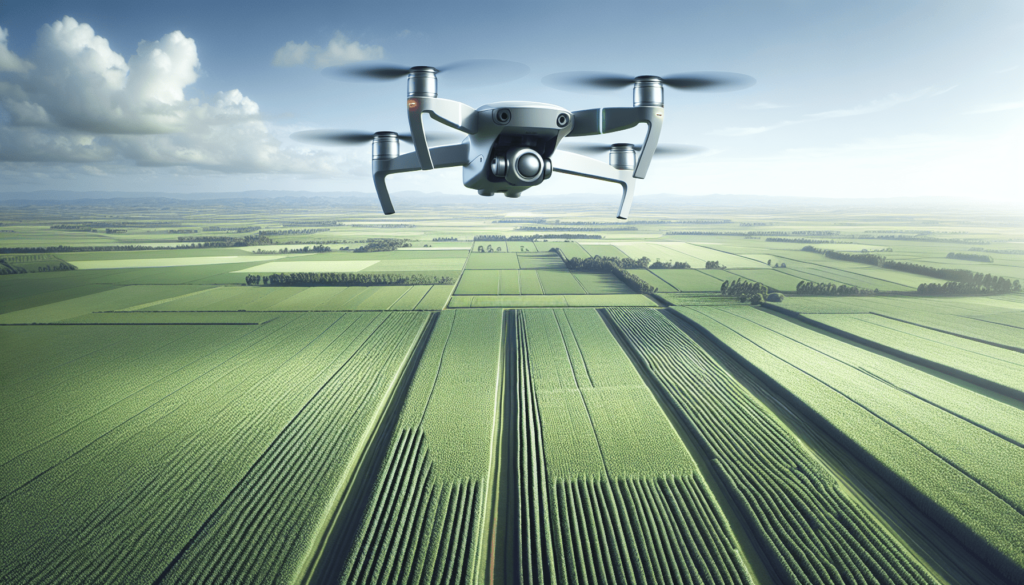
The Technologies Empowering Agricultural Drones
The true value of drones in agriculture lies in the technologies they carry. These high-tech gadgets are equipped with sensors and cameras, capable of capturing diverse data types that form the backbone of precision farming.
Remote Sensing
Remote sensing is among the most effective technologies that drones bring to agriculture. It allows for the collection of data from a distance without physical contact. Through satellite imagery, it provides a broad view, while drones offer fine-scale data collection. The fusion of these technologies results in comprehensive farm assessments.
Multispectral and Hyperspectral Imaging
Multispectral and hyperspectral imaging are crucial for assessing plant health, soil conditions, and disease management. These sensors can detect wavelengths invisible to the human eye, offering insights into plant physiology that aren’t apparent through visual observation alone.
| Feature | Advantage |
|---|---|
| Multispectral Imaging | Monitors crop conditions in detail using the spectrum beyond visible light |
| Hyperspectral Imaging | Provides an even more detailed view, monitoring changes over time |
The kind of detailed analysis drones provide is akin to having a full medical check-up for plants — it is this level of detail that makes me appreciate the sophistication of modern agricultural practices.
Geographic Information Systems (GIS)
GIS technology integrates with drone data to analyze spatial and geographic data. It helps in mapping and evaluating field conditions, which is integral to efficient farm management. I often think of GIS as the secret ingredient turning data into actionable insights for farmers.
Real-World Applications of Drones in Agriculture
The practical applications of drones in agriculture are diverse, addressing both fundamental and specific needs within the sector. From ensuring the health of each plant to managing vast tracts of farmland, drones are proving their worth in real-life scenarios.
Crop Health Monitoring
Drones equipped with thermal cameras can identify issues like water stress and disease long before they become visible to the farmer’s eye. This proactive approach means that interventions can be made at just the right moment to ensure crop health and yield.
Soil Analysis
Before planting, drones can perform 3D mapping to generate data on soil properties and terrain. By understanding the soil’s nutritional content and moisture levels, farmers can determine the most suitable crops for the area, optimizing their production strategy.
Planting and Seeding
In a rather futuristic turn, drones are being used for planting and seeding in areas difficult to access by conventional machinery. This approach reduces the need for labor, cuts down planting time, and minimally disturbs the soil.
Livestock Monitoring
Beyond crops, drones prove to be valuable in managing livestock by providing real-time insights into the health and location of animals, thus making herd management more efficient. Having grown up around farms, witnessing how drones have become a shepherd in the sky is, quite frankly, remarkable.
Challenges and Concerns
Despite the numerous benefits, incorporating drones into agriculture comes with its share of challenges and concerns. These include technical limitations, regulatory issues, and the cost factor, which must be considered.
Technical Challenges
Technical challenges include the need for robust data processing tools. While drones can gather vast amounts of data, processing and analyzing this data is crucial for deriving actionable insights. On several occasions, I have seen farmers overwhelmed by the sheer volume of data, underscoring the importance of user-friendly software solutions.
Regulatory Hurdles
Regulatory frameworks for drone usage vary by country and are often complex. Navigating these regulations is critical to ensure safe and legal drone operations in agriculture. The presence of drones in the airspace stirs debates on privacy and safety, which are issues that need addressing through robust legal frameworks.
Cost Implications
Initial investment in drone technology can be substantial. For smaller farms, the cost of acquiring and maintaining drones, along with training personnel, can be prohibitive. However, as technology advances, these barriers are slowly being lowered, offering optimism for wider adoption.
The Future of Drones in Agriculture
In contemplating the future, the continuous improvement of drone technology promises exciting possibilities for agriculture. From enhanced AI capabilities to increased adoption of swarm technology, the evolution is poised to accelerate.
Integration with Artificial Intelligence
The integration of AI with drones will further enhance decision-making abilities, allowing drones not only to collect but also to process and analyze data autonomously. The potential to foresee and respond to issues in real-time could redefine proactive farming strategies.
Expansion into New Areas
As drone technology becomes more accessible, their deployment will expand to cover more areas, including aquaculture and forestry. The versatility of drones gives them the potential to impact multiple sectors within the wider agricultural industry.
The Role of Education and Training
For the full potential of drones in agriculture to be realized, education and training will be essential. Empowering farmers with the knowledge to use these tech tools effectively begins with robust educational programs focused on the nuances of drone technology in agriculture.
Conclusion
Drones are undoubtedly changing the face of modern farming and crop monitoring. By delivering precision, efficiency, and innovation, drones are crafting a new narrative in agriculture that adapts to both contemporary challenges and future opportunities. As someone drawn to the wonders of innovation and practical application, observing this technological shift gives me a sense of optimism for the agriculture industry. Embracing this technology — and the dividends it offers — will set a course for a more sustainable and bountiful agricultural future.
